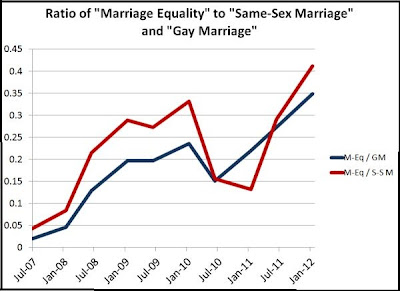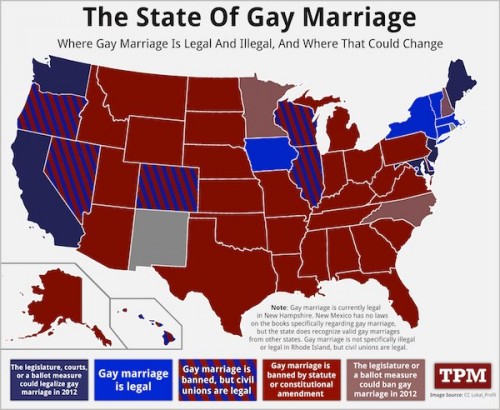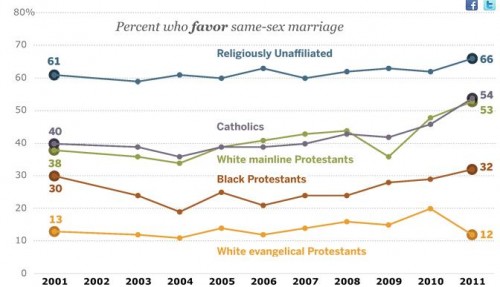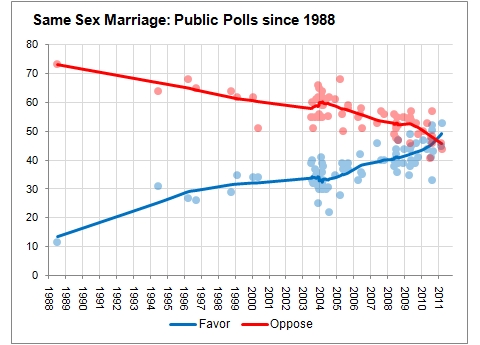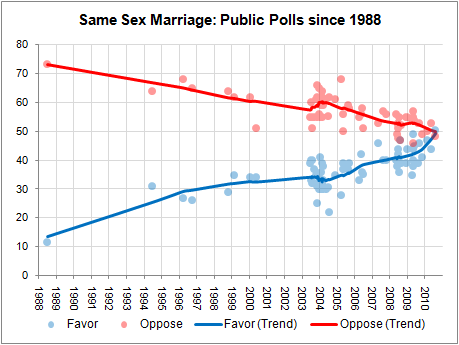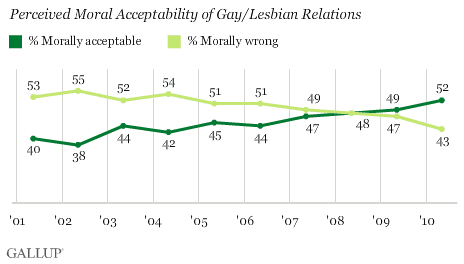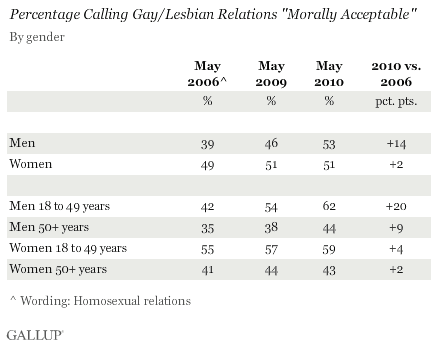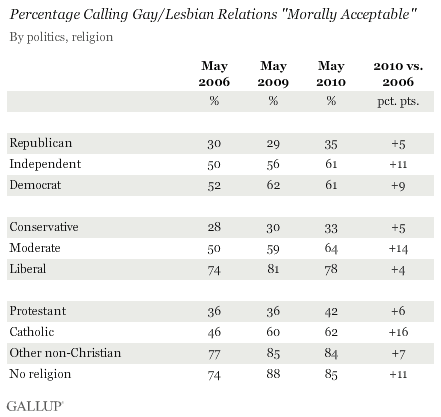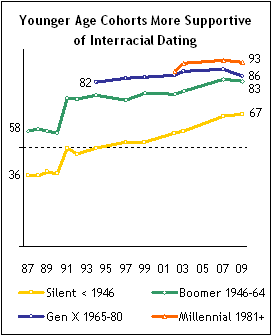Cross-posted at Montclair SocioBlog.
It can take a while to find the right word. But a mot juste may be crucial for framing a political issue. If you like the idea of men being able to marry men, and women women, what should you call the new laws that would allow that?
The trouble with “gay marriage” and even “same-sex marriage” is that these terms suggest – especially to conservatives – some kind of special treatment for the minority. It’s as though gays are getting a marriage law just for them.
At last, the gay marriage forces seem to have come up with a term that invokes not special treatment but a widely-held American value that’s for everyone – equality. A bill in New Jersey has been in the news this week, mostly because Gov. Christie says he will veto it. The bill is a “marriage equality” law.
The governor is in a bit of a squeeze. As a Republican with ambitions beyond New Jersey’s borders, he can’t very well be for gay marriage. But if his opponents can frame the matter their way, he now has to come out against equality. Which is why the governor continues to refer to the issue as “same-sex marriage.”*
It’s like “abortion rights” or even “women’s rights.” A phrase like that might rally women to your cause, but if you want broader support, you need a flag that every American can salute. I’m not familiar with the history of abortion rights so I don’t know how it happened, but those who want to keep abortion legal have managed to frame the issue as one of freedom to choose. They have been so successful that the media routinely refer to their side as “pro-choice.” To oppose them is to oppose both freedom and individual choice, principles which occupy a high place in the pantheon of American values.
It’s not clear that the “marriage equality” movement has been similarly successful, at least not yet. I did a quick Lexis-Nexis search sampling the last week of the months January and July going back to 2007. I looked for three terms: “same-sex marriage,” “gay marriage,” and “marriage equality.”
The general trend for all three is upwards as more legislatures consider bills, with big jumps when a vote becomes big news – that blip in July 2011 is the New York State vote. But the graph can’t quite show how “marriage equality” has risen from obscurity. That first data point, July 2007, is a 4. Four mentions of “marriage equality” while the other terms had 25 and 50 times that many. As of last week, “gay” and “same sex” still outnumber “equality,” but the score is not nearly so lopsided.
Here is a graph of the ratio of “equality” to each of the other two terms. From nearly 1 : 20 (one “marriage equality” for every 20 “gay marriages”) the ratio has increased to 1 : 3 and even higher when the discussion gets active.
If the movement is successful, that upward trend should continue. When you hear Fox News referring to “marriage equality laws,” you’ll know it’s game over.
———————————
* Christie is usually politically adept, but he’s stumbling on this one. He referred to a gay legislator as “numb nuts” (literally, that might not necessarily be a liability for a politician caught in a squeeze). Christie also said that he’s vetoing the bill so that the matter can be put on the ballot as a referendum – you know, like what should have happened with civil rights in the South.
I think people would have been happy to have a referendum on civil rights rather than fighting and dying in the streets in the South.
Several critics, including Numb Nuts, responded that, yes, Southern whites would have been happy to have civil rights left up to the majority. African Americans not so much. (If you’re looking for an illustration of Tocqueville’s “tyranny of the majority,” the post-Reconstruction South might be a good place to start.) The analogy is obvious – race : 1962 :: sexual orientation : 2012 – even if it was not the message the governor intended.


